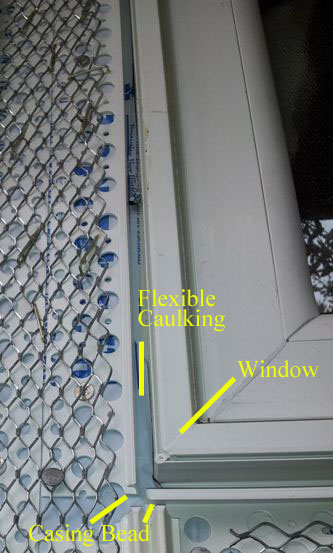Stucco is a great and durable home siding if installed correctly. Current standards for installing stucco on residential homes now calls for two significant new changes. These new changes require the use of “casing beads” and “expansion control joints” in addition to weep screeds and water-resistant barriers.
Stucco walls coverings normally expand and contract. When stucco covering ends at a door, window, or other dissimilar material, proper sealing of those joints is essential to prevent water intrusion.
Think of those joints in the same way as tiny cracks. Many people believe tiny cracks are “normal” for stucco. Cracks may be “normal”, but “normal” is not correct. “Normal” simply means “common”; and our home inspectors often time stucco in Sacramento is commonly installed incorrectly.
Damage to the structure’s wood framing and sheathing due to improperly installed stucco and water intrusion can cost tens of thousands of dollars years later.

New current standards require “Casing bead” to be used between stucco and all dissimilar materials. Casing bead is made of galvanized metal or vinyl, and is used to terminate stucco against doors, windows and dissimilar materials so that proper caulking of all intersections, butt joints, ends and corners at time of installation.
For old stucco coverings, when upgrades occur for windows and doors, it is recommended client also consider installing casing bead where the stucco meets these dissimilar materials, and apply caulking to the joints.
Current standards now also call for control joints periodically located throughout stucco wall coverings. The use and spacing of stucco control joints depend on several factors: type of materials, the orientation of the building, and the type of surface.
When stucco is applied over concrete and masonry surfaces, control joints are only necessary where there is a change in material.
When stucco is applied using metal lath, joint spacing should follow Portland Cement Plaster/Stucco Manual (EB049), and is based on ASTM C1063 – Standard Specification for the Installation of Lathing and Furring to Receive Interior and Exterior Portland-Cement Based Plaster requirements.
Generally, joint spacing should meet these criteria:
- Joint spacing should not be greater than 18 feet in any direction.
- No panel should exceed 144 sq. ft. on vertical applications.
- No panel should exceed 100 sq. ft. over curved or angular sections.
- No length-to-width ratio should exceed 2 ½ to 1 in any given panel.
Lath shall not run continuously through control joints. Lath must be terminated and tied at each side of the control joint so the control joint is free to flex and move separate from the lath and stucco.
Buying a house? In Sacramento, SacPro Home Inspections helps to protect home buyers against expensive hidden surprises. Our highly trained and skilled home inspectors are proud members of both the California Real Estate Inspectors Association (CREIA) and the American Society of Home Inspectors (ASHI).
